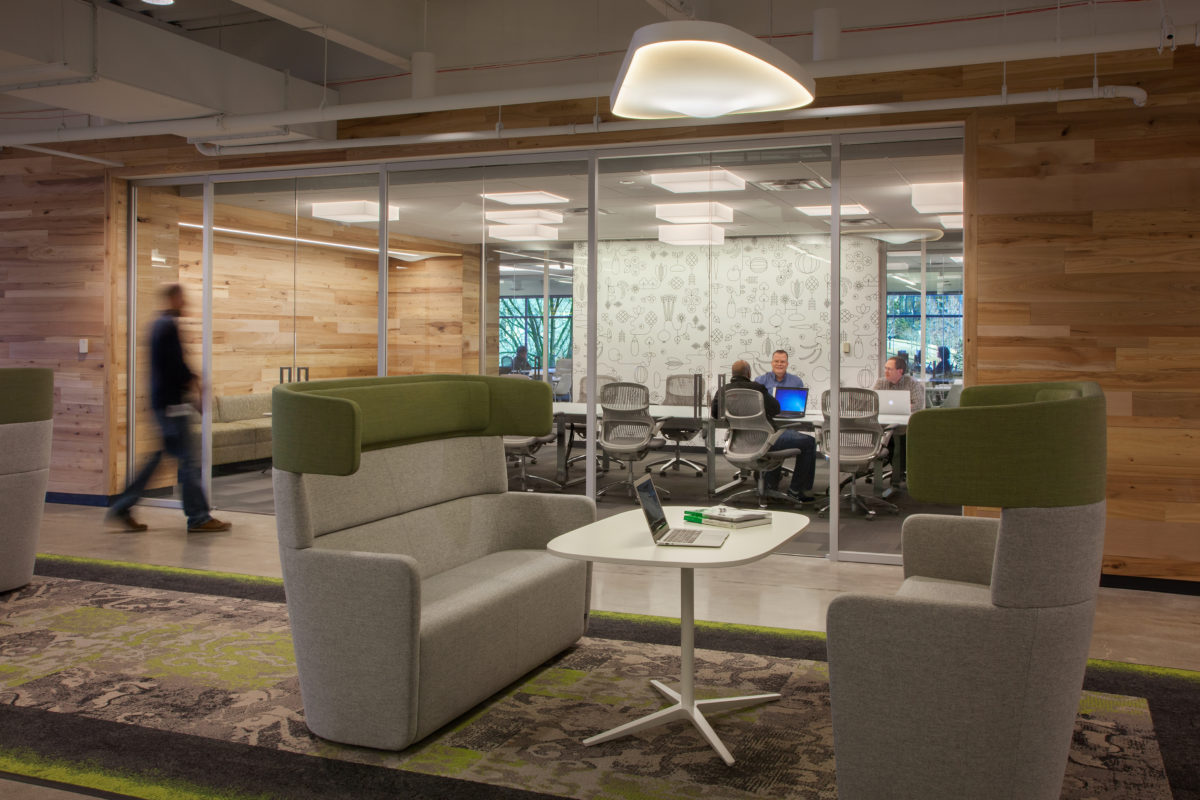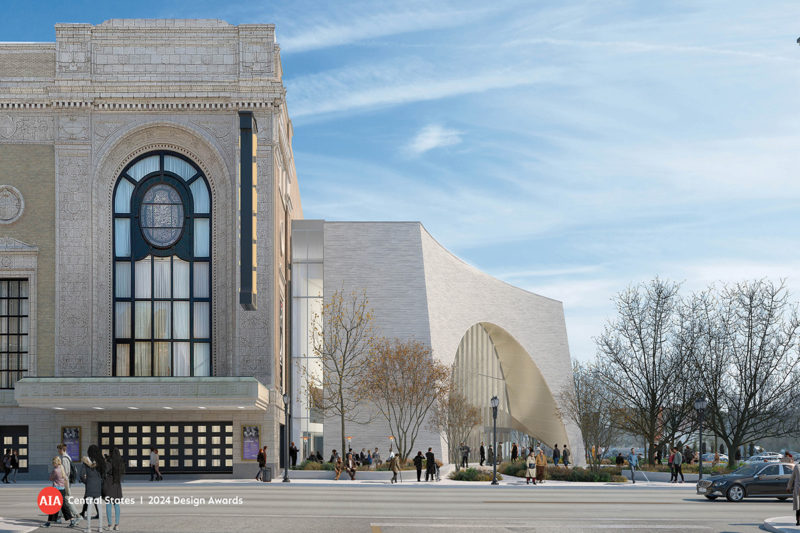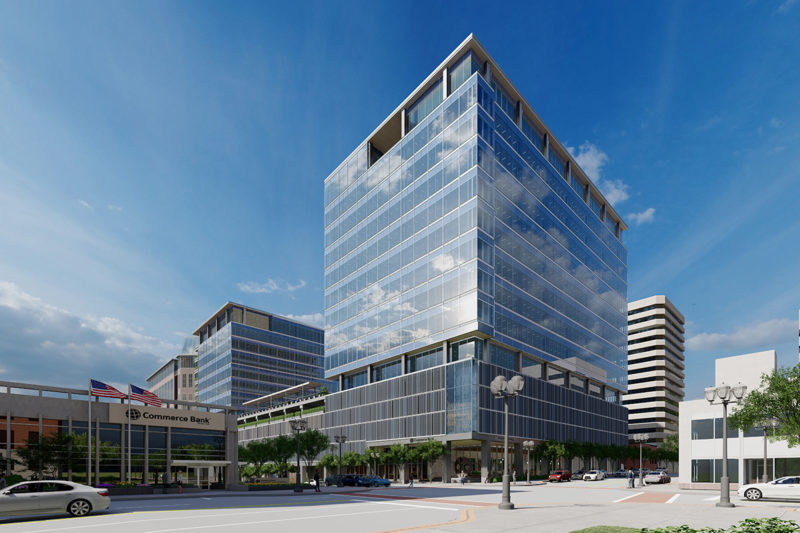Collaboration spaces can mean different things to different people. To some, it may be an enclosed room with the latest technology, while to others, it may be out in the open with more tactile tools like markers and paper. No matter what the setup is of a collaborative area, it should allow the participants to feel comfortable to promote the exchange of ideas between employees, that produces an efficient and effective result.
What makes one person comfortable in a collaborative environment will vary between individuals, so having a variety of options available is extremely important. Whether it’s a variety of spaces within a company, a variety of seating options within an area, scheduled versus unscheduled areas, or small versus large spaces; providing employees the flexibility to work efficiently and effectively is the goal. To encourage collaboration, the comfort of the employees is crucial, or the space won’t be used. Therefore furniture, acoustics, temperature, lighting, connectivity, convenience, and easy access to food and drinks is paramount to the success of these spaces.
Companies and employees benefit from these type of spaces as they promote the sharing of ideas that lead to more and better outcomes. And as employees see the results from these collaboration spaces, the use of them will only increase, thus providing a terrific return on investment not only for the companies, but for the employees as well.
As organizations continue to move to a more open office environment, designers are being challenged to rethink the next generation office design and ways to increase employee productivity and promote collaboration. Highlighted below are different collaboration spaces Christner has incorporated into our recent workplace projects.
Conference Rooms
Conference rooms have been the more traditional type of collaborative work environment but with the evolution of the open workplace, conference room design has shifted to become more transparent. No longer are conference rooms nestled in the corner of the office, but are now being placed along the spine of offices. Conference rooms still require a level of privacy and noise control but instead of the traditional privacy walls, designers are enclosing conference rooms with floor to ceiling glass partitions. Conference rooms are also equipped with a variety of collaboration tools, including large video monitors, dry-erase boards, and flexible furniture. Christner recently completed the design of a new office space for Climate Corporation’s St. Louis location. Creating a vibrant and transparent workplace that would attract top talent was a driving design goal for the project. The conference rooms were placed along the office ‘avenue’ between individual workstations and additional breakout spaces to promote transparency and connectivity throughout the space.

Cafes
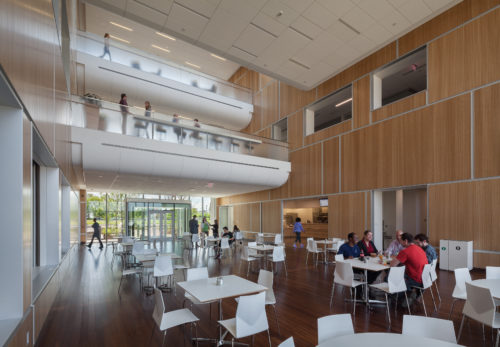
For years office cafes or dining areas have been used by organizations as impromptu meeting spaces, but now employees purposefully schedule meetings in these areas for more reasons than one. They are using them to not only tackle an issue at hand, but to see and be seen by others in the organization – which eventually leads to more collaborative discussions. The café on the first floor of the Danforth Plant Science Center addition serves multiple functions, acting as a physical connection between the existing building and new addition and providing a much-needed space for dining and informal collaboration. The furniture is flexible to allow for reconfiguration as collaboration groups grow or shrink in size. Behind the sliding bamboo wall panels are white boards where groups can document ideas in an informal setting. The second and third floors above the café also provide additional collaboration spaces with bar height seating.
Open Collaborative Areas
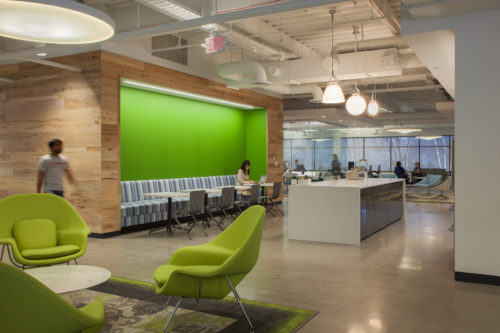
Open collaborative areas continue to evolve in the corporate environment, often including soft seating, marker boards, video monitors, and food options. For Climate Corporation’s St. Louis office, a variety of seating and lighting options adjacent to the break room were provided not only for lunch, but to encourage and enhance collaborative discussions throughout the day. The variety of seating options allow employees flexibility. The booth seats provide for more casual interactions while the larger picnic tables and high tops encourage larger group conversations and space to layout work.
For the North American headquarters of KWS, an open collaboration area was positioned directly adjacent to the labs and write-up areas, along a corridor with direct natural light. Furniture was selected based on flexibility and comfort. White boards were placed in close proximity to the write-up areas for easily sharing concepts and ideas.

Specialized Spaces
Often a project presents an opportunity for a unique design solution. For Edward Jones, a pedestrian bridge connecting a parking garage to an office building allowed for an opportunity to provide seating, tables, and wi-fi for associates to conduct impromptu meetings. The bridge also acts as a destination for casual meeting space. An honor system kiosk at the end of the bridge was provided for employees looking for a snack or beverage on their way to and from work. At the time of the project, Edward Jones was simultaneously embarking on a workplace strategy initiative and wanted to use the bridge as a “test pilot” for various types of seating and tables. The furniture selected for the bridge was not typical for Edward Jones, but the bridge has quickly become a popular meeting spot, with views overlooking the remainder of the campus to the south.
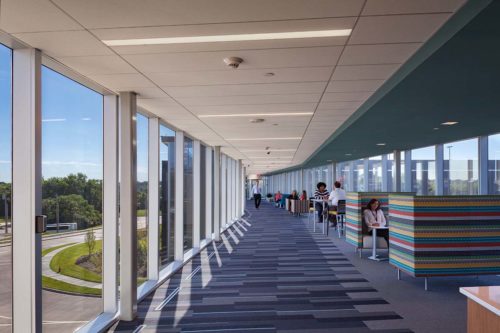
When strategically designed, collaboration spaces should benefit both the company and the employee. These spaces can encourage employees to work together to solve problems in an efficient and effective manner, ultimately improving productivity and the overall success of the company. At the same time, giving employees a place for social connection and engagement as part of their collaborative experience will improve their wellbeing and satisfaction and foster a culture that reflects organizational goals and values.
